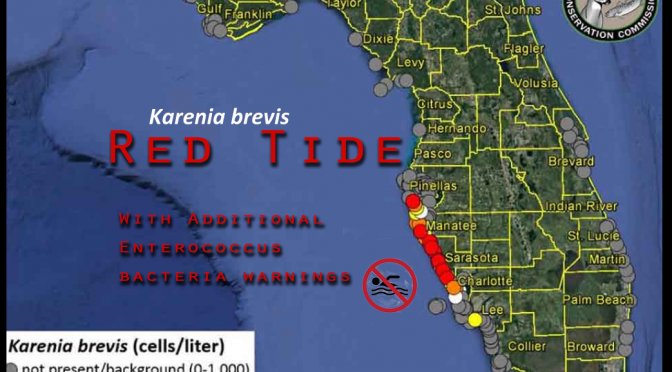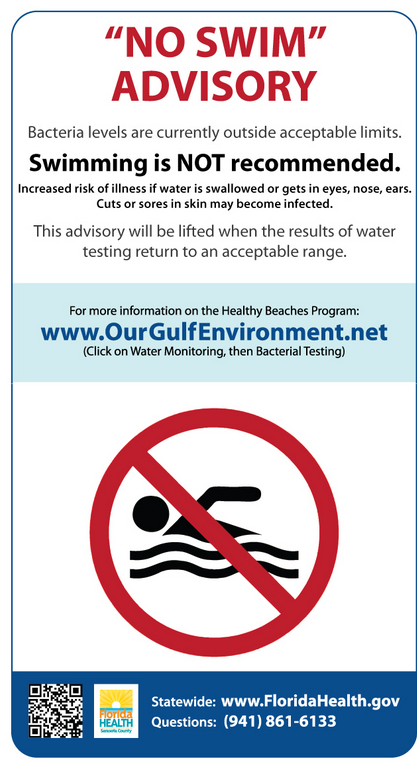Red tide is engulfing the coastline after a nasty wastewater spill may have triggered an intense algal bloom. Hurricane Hermine made landfall on the northern gulf coast of Florida on September second. The repeated bouts of rain put many of the aging sewage systems into overload. Even with sewage plants purging water pre-storm, the sewage systems became overloaded. Wastewater was lost into Tampa Bay, wastewater that was quickly washed into the gulf. Wastewater can be a trigger for the naturally occurring Red Tide (K. brevis) blooms.
It is very possible that this spill caused this season’s second (April 2016 red tide) red tide. Blooms of K. brevis are known to originate from 10-50 miles offshore. The delay between when wastewater poured into the gulf, to when the water made its way offshore, then finally returning as red tide to the coast, explains why there wasn’t a immediate bloom of red tide. After the bacteria in the runoff reached offshore waters K. brevis (naturally occurring) began to multiply. Then, onshore breezes likely pushed the blooms back towards the coast, resulting in the high abundance of K. brevis, and mass fish kills.
Sarasota County issued a no swim advisory after health officials found unacceptable concentrations of enterococcus bacteria along the beach. This harmful bacteria comes from natural and man made sources like animal waste including marine life, storm water runoff, and human sewage. No swim advisories were issued for Longboat Key, Siesta Beach, Turtle Beach, Nokomis Beach, and North Jetty. Today, September 30th, after an unusual mid-week bacteria testing, the no swim advisory was lifted at Siesta Beach when the Florida Department of Health officials in Sarasota received results meeting the healthy water standards set out by the US Environmental Protection Agency and the state recreation department.
Current and lifted no swim advisories due to enterococcus bacteria:
Lifted:Longboat Key, 3495 Gulf of Mexico Drive, Longboat Key, FL 34228
Lifted:Siesta Beach, 948 Beach Road, Siesta Key, FL 34242
Current:Turtle Beach, 8919 Midnight Pass Road, Sarasota, FL 34242
Current:Nokomis Beach, 100 Casey Key Road, Casey Key, Nokomis, FL 34275
Current:North Jetty, 1000 Casey Key Road, Casey Key, Nokomis, FL 34275
Below are pictures from surfer Eric Caloosa showing Saint Pete Beach where a fish kill occurred. Many dead fish were scattered along the beach, but Eric mentioned that neither him, nor his son noticed any airborn irritants.
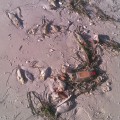
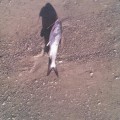
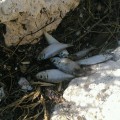
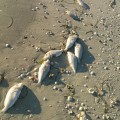

Red Tide has been reported up and down the coast. Below is NOAA’s county by county report as of today, Friday, September 30, 2016:
County Region: Forecast (Duration)
Northern Pinellas: Very Low (F-M)
Southern Pinellas: Moderate (F), Low (Sa-M)
Southern Pinellas, bay regions: Low (F-M)
Northern Manatee, bay regions: Low (F-M)
Southern Manatee: High (F), Moderate (Sa-M)
Southern Manatee, bay regions: High (F-M)
Northern Sarasota: High (F), Moderate (Sa-M)
Northern Sarasota, bay regions: High (F-M)
Southern Sarasota: Moderate (F-M)
Southern Sarasota, bay regions: Moderate (F), Low (Sa-M)
Northern Charlotte: High (F), Moderate (Sa-M)
Northern Charlotte, bay regions: Moderate (F-M)
Southern Charlotte: High (F), Moderate (Sa-M)
Southern Charlotte, bay regions: High (F), Moderate (Sa-M)
Northern Lee: High (F), Moderate (Sa-M)
Northern Lee, bay regions: Moderate (F-M)
Central Lee: Low (F-M)
Northern Collier: Low (F-M)
All Other SWFL County Regions: None expected (F-M)
According to the Florida Department of Health, the most common symptom associated with red tide are respiratory irritation. Red tide may become noticeable with throat irritation and coughing. Red tide may intensify already existing respiratory conditions such as asthma. Skin irritation and rashes as well as eye irritation are common when red tide is present. There are also many corals that release irritants when they themselves are exposed to noxious conditions like the phytoplankton’s (K. brevis) harmful brevetoxins. These coral generate toxins that may also cause skin irritation. Dead fish are common when red tide is present, and health officials suggest beach-goers stay out of the water when dead fish appear along the beach.
